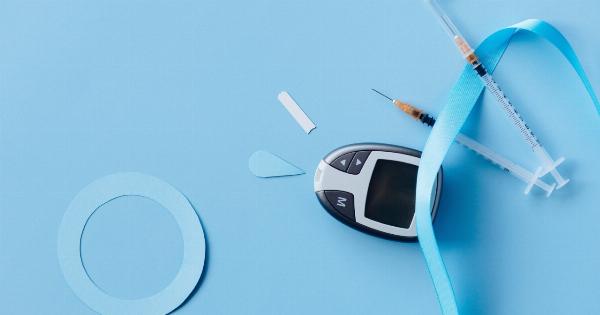As we age, our bodies go through various changes, and it can sometimes be difficult to differentiate between normal aging and symptoms of more serious health conditions. One such condition is diabetes, which affects millions of people worldwide.
While diabetes is often associated with older age, it is crucial to recognize its symptoms early on for timely diagnosis and treatment. In this article, we will explore the common symptoms of diabetes and discuss how to distinguish them from those typically associated with old age.
Understanding Diabetes
Diabetes is a chronic health condition that affects the body’s ability to regulate blood sugar levels. There are two main types of diabetes: type 1 and type 2.
Type 1 diabetes is usually diagnosed in childhood or early adulthood and is characterized by the body’s inability to produce insulin. Type 2 diabetes, on the other hand, is more common in older adults and is often linked to poor lifestyle choices, obesity, and genetic factors. With type 2 diabetes, the body becomes resistant to insulin or does not produce enough of it.
Common Symptoms of Diabetes
While the symptoms of diabetes can vary from person to person, there are some common signs to watch out for. These symptoms include:.
1. Increased Thirst and Frequent Urination
One of the earliest signs of diabetes is an increased feeling of thirst. This is known as polydipsia. Additionally, individuals with diabetes may find themselves urinating more frequently (polyuria).
The excess sugar in the blood triggers the kidneys to eliminate it through urine, leading to increased urine production.
2. Unexplained Weight Loss
Sudden and unexplained weight loss, despite an increased appetite, can be another symptom of diabetes. In type 1 diabetes, the body may break down protein and muscle to compensate for the lack of energy from glucose.
Type 2 diabetes can also cause weight loss due to the body’s inability to properly utilize glucose for energy.
3. Fatigue and Weakness
Feeling excessively tired or experiencing constant fatigue is a common symptom of both type 1 and type 2 diabetes.
High levels of sugar in the blood can make it difficult for the body’s cells to receive adequate energy, leading to a constant feeling of fatigue and weakness.
4. Blurred Vision
Elevated blood sugar levels can cause changes in the shape of the lens within the eye, resulting in blurred or distorted vision. This symptom is particularly common in individuals who have poorly controlled diabetes.
5. Slow-Healing Sores and Infections
Diabetes can affect the body’s ability to heal wounds and fight infections. Even small cuts or sores may take longer to heal for individuals with diabetes. Additionally, frequent infections, particularly urinary tract infections, are more common.
6. Tingling Sensations and Numbness
Prolonged high blood sugar levels can damage nerves over time, leading to a condition called diabetic neuropathy. This can result in tingling or numbness, primarily affecting the hands and feet.
It is important to note that this symptom may not be directly related to old age.
7. Recurring Skin Conditions
Diabetes can also make individuals more prone to various skin conditions such as fungal infections, itching, and dry skin. These recurring skin conditions may not be easily attributed to old age alone.
8. Increased Hunger
While unexplained weight loss can be a symptom of diabetes, an increase in hunger can also be a sign. The body’s cells may not be receiving adequate energy due to insulin resistance, leading to persistent hunger pangs.
9. Mood Swings
Fluctuating blood sugar levels can impact a person’s mood and mental well-being. Irritability, anxiety, and even depression can be symptoms of uncontrolled diabetes. Monitoring and managing blood sugar levels can help alleviate these symptoms.
10. Erectile Dysfunction
In men, diabetes can lead to difficulties with achieving or maintaining an erection, known as erectile dysfunction. This is caused by damage to the blood vessels and nerves over time.
Differentiating Between Diabetes and Old Age
While some of the symptoms mentioned above can be attributed to old age, it is crucial to understand when they may be indicative of underlying diabetes.
Aging itself does not cause diabetes, but it can increase the risk factors associated with it, such as weight gain and reduced physical activity.
It is essential to pay attention to the frequency, severity, and persistence of symptoms. For example, feeling tired after a particularly busy day or experiencing mild dryness of the skin may be more associated with aging.
However, if the fatigue is constant or the skin conditions are recurring and severe, it may be worth consulting a healthcare professional for further evaluation.
Regular check-ups, particularly for individuals at higher risk of diabetes, can aid in early detection. Routine blood tests can help determine blood sugar levels and identify any abnormalities that may require further investigation.
Conclusion
While the natural process of aging may bring about changes in our bodies, it is important not to dismiss alarming symptoms as simply old age. Recognizing the signs of diabetes is crucial for early intervention and effective management of the condition.
If you are experiencing any of the symptoms mentioned, it is advisable to consult a healthcare professional for proper diagnosis and guidance.


























